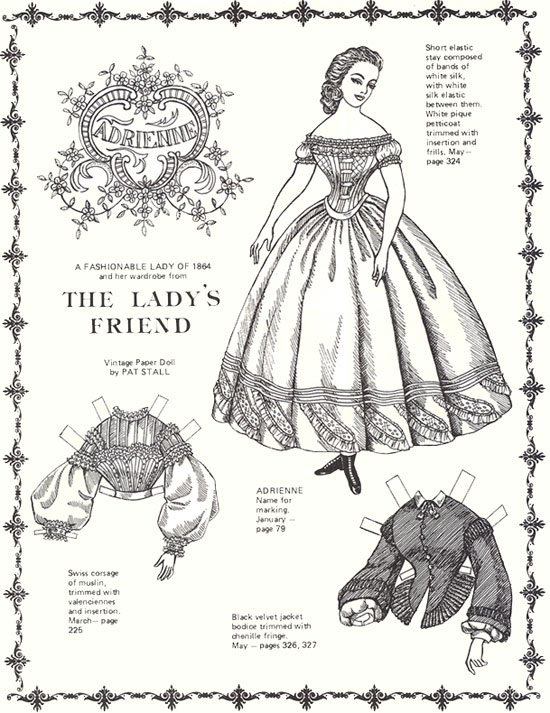Life-size dolls were used by French couture Houses until the later part of the 18th Century when they were replaced by "Pandoras". these were smaller models that often ended up in nurseries when their outfits were outdated. However it was the English who created the English Doll in 1790.
This Doll was 8 inches tall and made from card of thick paper, each fashion doll had 6 outfits with corsets, underclothes and headwear plus an envelope for storage.

19th Century paper doll
They became very popular and frequently appeared in ladies, journals as a more dynamic alternative to fashion plates.
The first paper doll specifically aimed at children was "Little Fanny", created in 1810 by S&J Fuller of London.
Tabs were used from 1828 to attach clothing, then in 1894 figures were melded into backgrounds and outfits were changed by threading the tabs through slits at the shoulders. In 1907 "tabard" style costumes were introduced, providing a front and back views. The "Magic Stay-on Doll" was launched in 1963 and used static electricity to keep the outfits on but the tabs prevailed.
Paper dolls were rapidly gaining popularity and in 1951 McCall's magazine introduced the fashion forward Betsy McCall who was perfect to promote their dress patterns. She became so popular that she was also made in 3D plastic form with a new series of doll sized patterns.

Over the years many celebrity dolls appeared, from Marie Antoinette, The Pope to Marilyn Monroe. and Elizabeth Taylor.

200 years on and paper dolls still enjoy huge popularity. Not limited to paper, magnetic dolls adorn fridges and websites present dolls with drag and drop outfits.

No comments:
Post a Comment